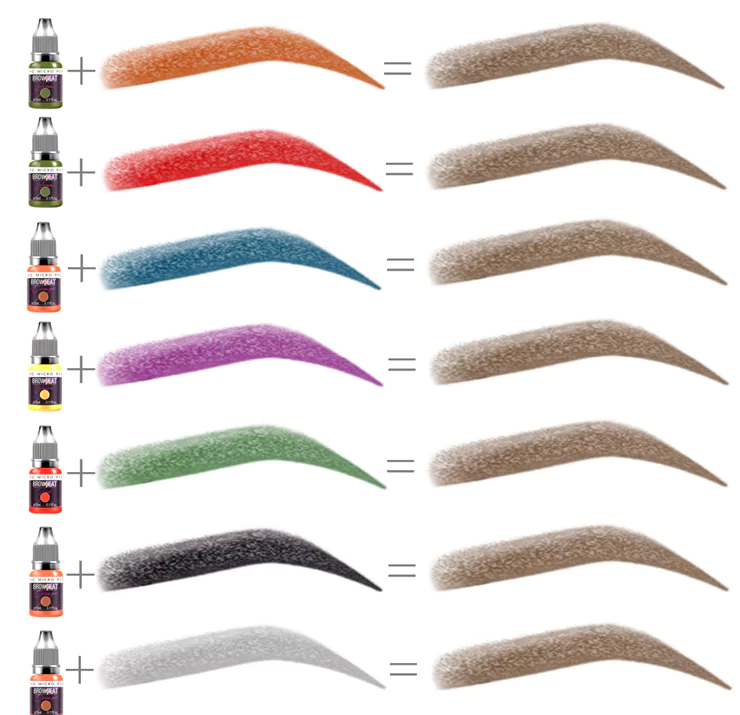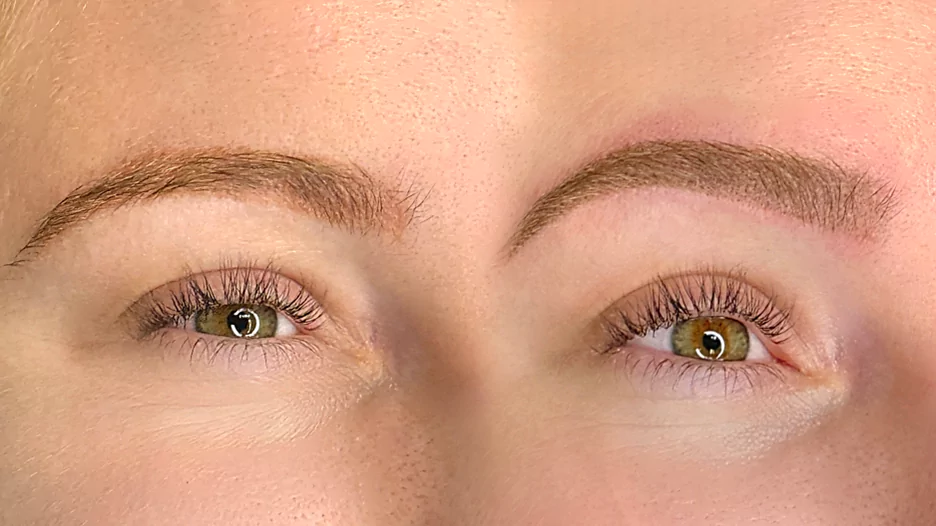The microblading industry has experienced rapid growth over the last decade, attracting artists eager to capitalize on the booming beauty trend. While many technicians excel at creating fresh microbladed brows, a significant gap exists in their skill sets: the ability to perform a microblading correction. The reality is that a large portion of clients seeking microblading services don’t have virgin skin—they have previous work that needs fixing. However, most artists are trained only to apply pigment but not to correct, adjust, or fix existing work.
This creates a major issue in the industry, leaving clients with poorly done brows and limited options for correction. In this blog, we will explore the holes in the microblading industry, why tattoo correction microblading redo is an essential skill, and how the lack of proper correction training affects both clients and artists.
The Problem: Artists Know How to Do, Not Redo
The majority of microblading courses focus solely on applying fresh strokes to untreated skin. While this is a critical part of learning the craft, it doesn’t prepare artists for real-world challenges—where many clients walk in with old, faded, or botched brows. The inability to address these cases creates frustration for both clients and technicians.
Here’s why:
Many microblading artists don’t understand how pigments fade and heal over time.
Most training programs don’t teach how to layer pigment over old microblading without causing unnatural results.
Without correction knowledge, artists may darken or distort existing brows rather than improve them.
Improper color correction techniques can leave clients with gray, blue, or red brows instead of natural-looking shades.
Why Microblading Corrections Are in High Demand
A surprising number of people need microblading correction rather than fresh work. This is because:
- The industry is still young – Many early microblading procedures were done using poor techniques, low-quality pigments, or improper tools.
- Trends have changed – Earlier microblading styles, such as very thin or arched brows, are now outdated. Clients want fuller, softer looks, but existing work can limit their options.
- Pigment shifts over time – Some microblading pigments fade unevenly, leaving behind unnatural tones like red, purple, or gray.
- Low-cost training programs produce underqualified artists – Many microblading courses are too short and fail to prepare artists for complex cases.
Common Issues With Microblading Corrections
1. Incorrect Color Corrections
One of the most common mistakes artists make is attempting to cover old, discolored pigment with a new shade. This often leads to brows turning green, purple, or blue over time because the underlying pigment wasn’t properly neutralized.
Proper technique: A correction specialist knows how to first neutralize unwanted colors with strategic pigment selection before applying a new shade.
2. Stacking Too Much Pigment
Some artists try to “fix” old microblading by adding new strokes or shading directly over previous work. The result? Brows that look muddy, overly saturated, or uneven.
Proper technique: A skilled correction artist understands how to balance saturation levels and work with the existing pigment rather than blindly layering more.

3. Overuse of Laser Removal
While laser tattoo removal is sometimes necessary for bad microblading, many artists rely too heavily on it instead of using more advanced corrective techniques. The problem? Laser removal is painful, expensive, and doesn’t always work on certain pigments.
Proper technique: A knowledgeable artist knows how to combine non-laser removal methods with pigment neutralization and careful reshaping.
4. Shape Distortion from Old Work
When a client’s original microblading was done incorrectly, the shape might be too high, too low, too close together, or too far apart. Many artists feel helpless in these cases because they weren’t trained in tattoo correction microblading redo methods.
Proper technique: A correction expert knows how to strategically reshape the brows, working with the existing structure rather than against it.
Why Artists Must Learn Microblading Corrections to Succeed
For microblading artists who want long-term success, correction skills are just as important as application skills. Here’s why learning microblading correction is a game-change:
- More clients will seek your services – Being able to fix old work sets you apart from the competition.
- • You can charge higher prices – Correction work is more advanced, meaning clients will pay a premium for skilled services.
- • It prevents bad reputations – Artists who blindly tattoo over old microblading can damage their reputation with poor results.
- • It increases referrals – Happy correction clients will spread the word that you are an expert in tattoo correction microblading redo services.
As the microblading industry matures, more clients will require corrections. Artists who only know how to do but not redo will struggle, while those trained in correction techniques will thrive.
What to Look for in a Microblading Correction Specialist
If you’re a client needing a microblading correction, choosing the right artist is crucial. Here are the top qualities to look for:
- Specialized Correction Training – They should have specific education in fixing and adjusting previous microblading, not just applying fresh brows.
- Experience With Various Correction Methods – The best artists know how to use color correction, saline removal, and reshaping techniques.
- Portfolio of Correction Work – Make sure they can show before-and-after photos of their correction clients, not just new brows.
- Honest Consultations – A real professional will assess your brows carefully and explain all options, rather than rushing into a quick fix.
- A Commitment to Natural Results – Correction work should enhance the brows, not create an unnatural or overly darkened look.
The Future of Microblading: More Correction Experts Needed
As microblading continues to evolve, the industry needs more correction specialists. Artists who invest in tattoo correction microblading redo training will be at the forefront of the industry, offering services that most competitors cannot.
For clients, this means better results, fewer botched jobs, and access to professionals who truly understand how to correct and improve previous work.
For artists, it’s an opportunity to set themselves apart, increase their earning potential, and build a reputation as a true expert in microblading correction.
If you’re an artist looking to elevate your skills or a client in need of a correction, seek out experts who understand both the art and science of fixing microblading. The future of the industry depends on it.

